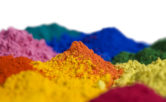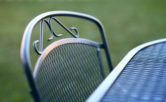
The Ultimate Guide to Powder Coating Colors
Applying powder coating was invented as a way to protect metals from corrosive chemicals and abrasive processes –but like with most protective inventions, people soon learned how to use it for other purposes, with the most notable being a fun way to play with different colors and finishes for aesthetic appeal.
The most attractive bit about powder coatings is you can paint a very wide variety of colors, textures, and gloss over any metallic object and some glass objects –yet still have a resilient coating that withstands bending, impact, and chemical interaction compared to conventional paint. This makes it ideal for use on decorative metal finishings, household appliances, architectural products, and industrial products.
If you’ve been wondering about how wide or narrow the color range for powder coating is, this article will offer you some beneficial information.
What Colors are Available in Powder Coating?
You have thousands of powder coating colors and hues to choose from:
- antique pink
- anthracite gray
- bottle green
- chocolate brown
- chrome
- carmine red
- heather violet
- any color you can imagine
In other words, you can get literally every color of the rainbow and different special effects. Any custom color can be created or matched. Here is a chart showing some of the most common colors:

To see how each of these color look on a powder coating surface and to custom color match powder coat, see our powder coating color gallery.
Choosing the Right Color
Before you settle on a color, choose the right powder coating type because they come in different grades with some fit for exteriors and others fit for interiors. The guiding point here is if you choose an interior type for exterior application or vice versa, the paint will weather in a short time denying you the service you intended it for.
Take for example epoxy powder coatings. They are extremely durable, offer a tough finish, adhere well to metals, and have proven resistance to chemical corrosion that is better than other powder types. However, they do not offer UV protection and the summer can lay significant wear on it without proper maintenance, but it can serve you for decades without fading indoors.
On the other hand, polyesters are resistant to UV damage, and super durable powders are designed to resist chemical corrosion and bending while retaining color even when exposed to the elements.
Understanding Solid Colors
Solid colors have no special effects added to them and are usually run by standards set by different bodies such as BSI, RAL, the federal government, and ANSI.
These standards are meant to act as a reference point used to measure and match colors for different applications.
Solid powder coating colors are also achieved through Pantone –which is simply ink applied on gloss paper.
Choose earthy tones like browns and soft pastels, bold colors like pink and neon, or dark colors such as black.
Word of caution: Loud colors like neon and pink are more difficult to achieve than darker colors so you may not get the exact brightness you want. They also tend to fade faster than their darker counterparts.
Choosing Gloss Levels
Gloss levels can be as low as 5 or as high as 90. The higher you choose, the shinier your color will appear and the lower you choose, the more matte-like it will appear. These applications work best on super durable and polyester coating types.
Choosing Special Effects
Metallic special effects are many people’s favorites with some people thrilled by the fact that metallic special effects make a color change when you look at it from different positions. You can opt for a shimmery look, loud sparkles, or multiple colors on one metal. Better yet, you can get popular shades like platinum and pewter or champagne.
For interior applications, you can choose translucent special effects. This effect makes it possible to see the metal and whatever is on it through the powder. However, picking translucent effects doesn’t mean that you have to stick to natural metal colors. You are free to go for something as vivid as teal or a raspberry shade. The biggest problem in translucent finishing is that it tends to show uneven application or imperfections in the substrate or base coat. But if you get it done by an expert, it gives a sleek finish that’s hard to miss.
Other popular interior special effects include wrinkles and woodgrain. Wrinkles look just like the natural wrinkles that form when you lay a light fabric on a flat surface without smoothing it. They are great if you’re looking to add interest or want to hide an imperfect spot. They also come with commendable weathering capabilities, hardness, and resistance to corrosion.
Woodgrain special effects are applied through a process called sublimation to make a different surface from wood look like it’s made of expensive wood. The powder coating serves as the base color then the sublimation process tops it off with a mimicked wood or natural stone look.
Dormant special effects work perfectly on bicycles. The idea is to use two coats of paint with the bottom coat having a vivid color while the topcoat color is clear. Essentially, the bottom coat bears the dormant color which comes alive when the clear topcoat is applied –giving it a vibrant shiny look. As a bonus, the topcoat helps in protecting the color from fading, corrosion, and everything else that qualifies as weathering.
Choosing Textures
If you’re into texturing, you can choose from anywhere between a texture that’s as fine as bar sugar or as heavy as slip-resistant materials. Unfortunately, you can’t choose a heavy texture for fluoropolymer powder because it negatively affects its resistance to weathering.
The three main texture options are wrinkle, vein, and sand texture. The sand variant is quite rough to the touch –feels like sandpaper –and is only applicable to a gloss level of 20.
If you want a rough texture but are not a fan of sand, you can opt for a wrinkled texture. It is just as rough as sand but has a better grip provided by the small contours.
Finally, the vein texture is characterized by small dents like you’d find in a golf ball. It’s also the most forgiving of the three when it comes to gloss levels.
One More Thing
Now that you know there are endless colors to choose from and very minimal limitations to their application, consider everything about your metal that affects the color or special effects you want to avoid frustrations.
The quality of work you get will also depend on who does it for you. By choosing AR Iron, you choose unlimited color options, expert advice, and processes tried and proven over decades to produce high-quality results. For more information, please contact us and we’ll be more than willing to assist!




